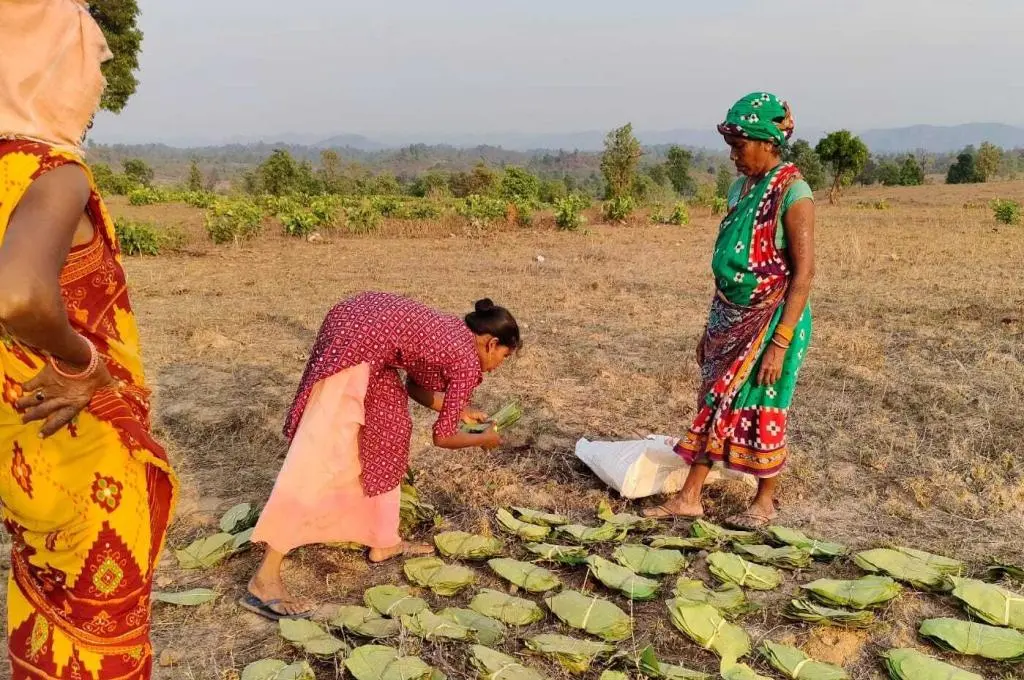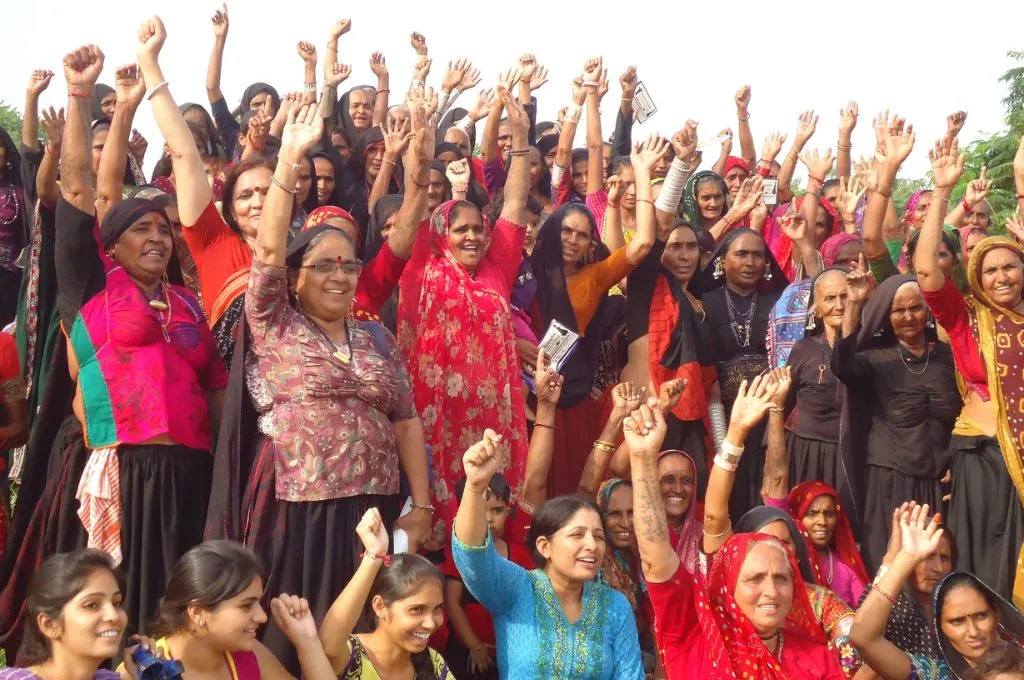What are commons?
Commons are broadly recognised as resources that are shared by a community and managed for collective use and benefit. They are typically not owned by any single individual but can be used by all members of the community who have unrestricted access, and can encompass a wide range of resources, including land, water, and air.
Other than physical and natural resources, commons are also understood globally as:
- Digital commons: Examples include free and open-source software (FOSS) such as Linux, an operating system, and shared digital knowledge platforms such as Wikimedia Commons, a collection of freely usable media files to which anyone can contribute.
- Cultural commons: These comprise shared ideas, creativity, traditional knowledge, and customs that define a community’s identity. Examples include festivals, local languages, and artistic movements, as well as common spaces with cultural significance such as the orans (sacred groves) in Rajasthan.
- Intellectual or knowledge commons: These could include information that is common knowledge within a specific community, for example e=mc2 for physicists, or medicinal uses of neem among many communities in India.
The term ‘commons’ can also be understood through several distinct yet interconnected perspectives.
1. Through who controls them
Commons can be seen as common pool resources, which are resources shared by a community or a collective in terms of ownership, use, and management. These tangible assets and shared spaces play an essential role in sustaining livelihoods, biodiversity, and community well-being. Examples include forests used by Adivasi and rural communities, coastal ecosystems like mangroves and beaches used by fisherfolk, pastures used as grazing grounds, community-managed water tanks used for agricultural purposes, and village burial grounds.
It’s important to note that the concept of commons applies not only to local resources but also to global ones such as the atmosphere or oceans. In international policy discussions, these are recognised as resources that are in limited supply and are shared by the entire planet. For example, the atmosphere’s capacity to absorb greenhouse gases is finite. Agreements like the Paris Accord address concerns around these global commons to ensure their sustainable use.
2. Through how they are used
The concept of commons is deeply rooted in understanding how shared resources are used. They are the commons by virtue of access—open to everyone within a defined community. At the same time, commons are subtractable, that is, if one person uses the resource, less of it remains for others. Say, if in a village the water from the tank is pumped out by a few families for agriculture, other families in the village will have that much less water for livestock or bathing.
This dynamic often leads to what the ecologist Garrett Hardin famously termed the ‘tragedy of the commons’. According to him, unrestricted use of commons results in overharvesting, resource depletion, and ultimately collapse, as the natural rate of replenishment is exceeded. However, Hardin’s theory has been critiqued for portraying the depletion and ultimate collapse of commons as inevitable. Nobel laureate Elinor Ostrom argued that communities can and do develop effective systems of collective management to prevent such outcomes.
3. Through legal and policy frameworks
Another perspective focuses on how commons are administered and managed via legal and policy frameworks. The Forest Rights Act (FRA), 2006, serves as a significant example of commons management, particularly in recognising and safeguarding the rights of forest-dwelling communities over their traditional lands and resources. Other examples of legal frameworks that enable community participation include the Coastal Regulation Zone Notification for coastal commons and the Environmental Impact Assessment Notification for development projects.
4. Through collaborative decision-making
Finally, the fourth perspective is the very idea of governance itself. Historian Peter Linebaugh popularised the term ‘commoning’ as a verb to highlight it as an activity. Commoning refers to the practice of working together to care for commons and shared resources, and setting up processes and systems—for example, shared responsibilities and collaborative decision-making—that enable individuals and groups to collectively manage these resources.
One example of commoning practices can be seen among traditional fishing communities on the Coromandel coast of India. Fishermen councils regulate nearby territorial waters by enforcing bans on specific fishing gear or methods. Violators are tried by the councils, which impose fines or sanctions to maintain sustainable practices.
Collaborative commons management also gives rise to what is known as a common property regime, which is different from both individual and private property regimes. Under a common property regime, communities collectively govern and manage shared resources. This form of governance includes rights of access, withdrawal, management, exclusion, and alienation.
Why are commons important for India?
According to one estimate, 2.5–3 billion people around the world depend on commons for their livelihoods and to fulfil recreational or spiritual needs, such as community gatherings, religious ceremonies, traditional practices, or simply enjoying nature. In India, approximately 350 million rural poor depend on the commons for fodder, fuel, forest produce, fish, bamboo, and much more.
Here are a few examples of how commons are integral to communities’ socio-economic well-being:
- Orans, or sacred groves, in Jaisalmer, Rajasthan, are community forests preserved and managed by rural communities under sacred codes and traditions. Often associated with local deities, orans are rich in biodiversity and typically include a water body. They serve as grazing grounds for herders, as spaces for communal congregations and festivals, and as habitats for the critically endangered great Indian bustard.
- In Chennai, Tamil Nadu, coastal commons—which include sandy shores, mangroves, and estuaries—are critical to the local biodiversity of the region. They are home to diverse species of flora and fauna, and function as a site where fisherfolk can haul in and dry their catch as well as a recreational space.
- In Madhya Pradesh, where approximately 70 percent of households comprise landless, small, or marginal farmers, common lands serve as a crucial source for fodder—dry matter from the commons can make up for approximately 50 percent of the total fodder available.
- Forest commons in Uttarakhand are used as resources for cooking fuel and timber as well as non-timber forest products (NTFPs) such as medicines and food. These forests are managed by van panchayats—locally elected bodies that work on protecting the forests while ensuring that communities have access to them. Taking care of the forest involves clearing the floor of dry leaves to reduce the chance of forest fire, clearing bushes and pruning trees to make space for grass for grazing, etc.
Commons also reflect a deep, sustainable relationship between communities and natural resources in rural, peri-urban, and urban areas. For instance, the East Kolkata Wetlands (EKW) exemplify the sustainable coexistence between communities and their ecosystems. The wetlands support diverse activities: fish farming; cultivation of rice, vegetables, and fruits; and multiple household uses of water. Over time, the communities have developed sustainable practices—such as using wastewater as a nutrient source and periodically dredging pond soil—to conserve the wetlands.

How are the commons governed in India?
The current governance structures and legal provisions pertaining to common resources must be studied against their historical background.
A large part of how the commons are officially understood can be traced back to India’s colonial legacy. During the process of land settlement in the country by the British, individuals were provided rights to private lands, while common lands were largely brought under state control. A significant aspect of this enclosure was the colonial-era classification of uncultivated lands as ‘wastelands’—a term that erroneously implied these lands were unproductive. Under this framework, the Crown took control of these lands, intending to extract resources from the forests without community involvement, all for the purpose of generating additional revenue. However, these so-called wastelands often included vital community resources that were located near villages and that traditionally served essential purposes such as grazing and communal use.
This outdated perception of commons as ‘wastelands’ continues to linger in policymaking, and even today the term ‘common land’ eludes formal recognition within official land-use classification systems. While land records across India do contain terms for commons—such as shamlat and nistar—this recognition does not always result in improved or easier management.
As a result, the commons that communities had long depended on for their lives and livelihoods, and collectively managed, have been transformed into state property. This systematic alienation of local communities has further exacerbated the degradation and undervaluation of commons, eroding not just the resources themselves but also the relationships and traditional systems of managing them.
Despite these challenges, several constitutional and judicial mechanisms offer commons protection. Some of these are listed below.
- Article 39(b) of the Constitution of India states that the “ownership and control of the material resources of the community” should be distributed to “best subserve the common good”. While this is one of the Directive Principles of State Policy and is therefore not enforceable or justiciable, it serves as a moral compass for policymaking and embodies the idea of India as a welfare state. The Constitution also supports commons and commoning through provisions such as the fundamental duties of citizens to protect and improve the natural environment.
- The management of common lands largely falls under the jurisdiction of the state revenue department and the forest department. However, after the 73rd Constitutional Amendment, the Panchayati Raj Institutions (PRIs) received custodial rights to protect and govern village common lands. The Panchayat (Extension to Scheduled Areas) Act, 1996, extended this amendment to fifth schedule areas with a clear emphasis on commons.
- There are initiatives that address different aspects of commons management, such as the FRA that empowers forest-dwelling communities to conserve and use forest resources, and schemes such as the National Wetland Conservation Programme and the National Afforestation Programme that aim to safeguard critical ecosystems.
- There are also judicial verdicts that uphold the public trust doctrine, according to which the state is regarded not as an absolute owner but as a mere trustee of all natural resources for the benefit of the public at large. Judicial orders such as Jagpal Singh & Others vs State of Punjab & Others (2011) reassert the communities’ rights over their commons. However, a tilted follow-through of such orders has also led to a disproportionate impact on and the eviction of vulnerable communities.
- Permanent institutions known as public land protection cells (PLPCs) have been set up in Madhya Pradesh and Rajasthan. These cells receive complaints on the encroachment of rural common lands, follow due legal processes to resolve disputes, and work to restore these resources to the gram sabha or gram panchayat. However, they have also created several new tensions in the name of selective removal of encroachments.
Community-based organisations and nonprofits play a crucial role in supporting communities to manage commons—they bridge governance gaps and ensure that communities can assert their custodial rights, for instance, by helping them file claims under the FRA or address encroachments. In Kalahandi, Odisha, local nonprofits such as Seva Niketan have been collaborating with village-level bodies to secure community forest rights.
What are the challenges with the management of commons currently?
While there is a blend of community-driven and government-led approaches aimed at conserving and managing common resources effectively, significant challenges persist.
1. Unclear classification: The vagueness surrounding the concept of ‘common land’ within official land-use classification systems, along with their historical classification as wastelands, compounds their precarious status. Ambiguous boundaries, coupled with overlapping and poorly enforced land and property laws, add to the governance challenges. As a result, common lands are often vulnerable to encroachments and private expropriation as tenure is less likely to be legally recognised in common lands than in private lands. For example, the establishment of solar power plants in Jaisalmer’s orans has resulted in their encroachment. Orans are collectively managed by the communities living around them and are recognised by the Supreme Court as deemed forests, but they were encroached upon because local governments have been slow to identify these lands and classify them as such.
2. Lack of data: In the absence of an official land category and consolidated data on land use, estimating the extent and status of common land has been a challenge. For example, data from the 2011 Census of India indicates that de facto common lands span 205 million acres, whereas the data from the Directorate of Economics and Statistics puts this estimate at 310 million acres. This is due to the significant difference in the extent of area categorised as ‘forest’ in the two datasets. Notably, more than 25 years have passed since the first and only comprehensive assessment of India’s common lands in 1998, leaving a significant gap in understanding their current status. This has also engendered weak policies, conflicts, and inadequate public oversight.
3. Problems with recognising custodianship and governance: Commons are not just about formal ownership or tenure of land but also encompass custodianship, access, use, and governance. Even without formal property rights—definitions of which have changed over time based on evolving legal and political frameworks—communities have, for centuries, managed and sustained commons through shared norms, traditions, and informal agreements. The challenge arises when these informal systems intersect with policies that do not account for these non-ownership-based arrangements. For instance, when commons are treated solely as state-owned or as open access (available for unrestricted use), it can undermine the role of communities as stewards. This leads to overexploitation or the exclusion of traditional inhabitants or stewards, disrupting the delicate balance of access and governance.
4. Centralised management: Many commons, such as forests, are overseen by centralised bodies like the forest department, which operate from urban centres and are far removed from the realities of the ecosystems and communities they govern. This detachment can often result in ineffective management of what are inherently local resources, where the direct users are most invested in their health and sustainability. In the forest department’s case, for instance, rather than empowering local communities, the department relies on a bureaucratic system that delegates responsibilities to forest guards, who lack personal stakes in forest health and operate under rigid protocols.
5. Lack of autonomy at the grassroots: While there are various co-management initiatives in India, such as sanrakshan samitis (conservation committees) or joint forest management programmes for forests, these community-based institutions frequently lack the autonomy, discretion, and resources necessary to manage common resources efficiently. For example, the responsibility to maintain asset registers and to update them regularly has been conferred on the gram panchayats. However, while the panchayats’ role has been laid out explicitly, little has been done to ensure that they have the knowledge or the capacity to implement it in good faith. PRIs receive no budgetary allocations to hire personnel or undertake management activities without higher-level permission, and experiences from the ground reveal a lack of awareness, uncertainty, and even apprehension over what asset documentation entails. Similarly, although Sixth Schedule areas generally have autonomy over land management, such as community institutions in Nagaland, local bodies generally lack the funding needed to take care of community-conserved areas.
6. Diversity of contexts: The diversity of geographies, terrains, and local community practices across India further complicates the management of common resources. Different types of commons have different names, have varying degrees of legal recognition, and are governed by distinct institutional frameworks in different states. Forest management varies across regions, with van panchayats overseeing forests in some areas and local panchayats managing common lands known as shamlat, gair mumkin pahar, zudpi jangal, and poramboke.
7. Preconceived biases: The notion that local communities are not capable of managing their affairs could be at the root of the problem. As a result, governments either tend to parcel these lands and hand them over to individuals or take over the management of such lands. This has been further impacted by the limited effectiveness of gram sabhas and panchayats—institutions designed to help communities manage shared resources.
While the criticism is that such collectively managed institutions would fail, there is no panacea. It is better to explore a plurality of context-based solutions where individual, common, and public regimes co-exist. This mindset persists even though there have been successful examples that demonstrate the potential of community-led governance. In one such example out of hundreds, Thana village, Rajasthan, witnessed years of resource mismanagement and encroachment on charagah (common grazing land), which left villagers struggling to secure adequate fodder for their livestock. This was exacerbated by the region’s arid climate. In 2006, the community formed an informal committee, which collaborated closely with local authorities to conserve and restore the common lands. Their efforts not only revitalised the ecosystem but also ensured that the charagah became a sustainable source of fodder for their livestock.
While laws and institutional frameworks are crucial, the larger issue lies in the alienation of communities from their resources. Reimagining governance through the lens of community involvement and self-management can inspire alternative ways of commoning and managing commons, potentially offering more sustainable and equitable approaches to resource governance.
Shreya Adhikari and Jasmine Bal contributed to this article with inputs and insights from Ashwini Chhatre, along with Kanchi Kohli and Jagdeesh Rao Puppala who are part of the Common Ground initiative.
—






